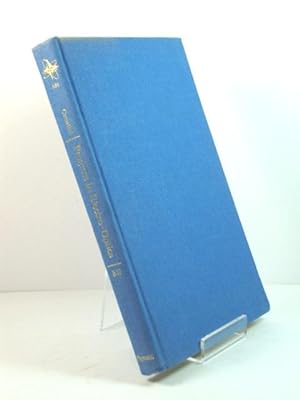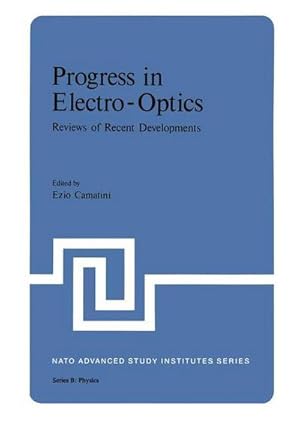progress electro optics reviews recent (3 Ergebnisse)
Suchfilter
Produktart
- Alle Product Types
- Bücher (3)
- Magazine & Zeitschriften (Keine weiteren Ergebnisse entsprechen dieser Verfeinerung)
- Comics (Keine weiteren Ergebnisse entsprechen dieser Verfeinerung)
- Noten (Keine weiteren Ergebnisse entsprechen dieser Verfeinerung)
- Kunst, Grafik & Poster (Keine weiteren Ergebnisse entsprechen dieser Verfeinerung)
- Fotografien (Keine weiteren Ergebnisse entsprechen dieser Verfeinerung)
- Karten (Keine weiteren Ergebnisse entsprechen dieser Verfeinerung)
- Manuskripte & Papierantiquitäten (Keine weiteren Ergebnisse entsprechen dieser Verfeinerung)
Zustand Mehr dazu
- Neu (2)
- Wie Neu, Sehr Gut oder Gut Bis Sehr Gut (Keine weiteren Ergebnisse entsprechen dieser Verfeinerung)
- Gut oder Befriedigend (1)
- Ausreichend oder Schlecht (Keine weiteren Ergebnisse entsprechen dieser Verfeinerung)
- Wie beschrieben (Keine weiteren Ergebnisse entsprechen dieser Verfeinerung)
Einband
Weitere Eigenschaften
- Erstausgabe (Keine weiteren Ergebnisse entsprechen dieser Verfeinerung)
- Signiert (Keine weiteren Ergebnisse entsprechen dieser Verfeinerung)
- Schutzumschlag (Keine weiteren Ergebnisse entsprechen dieser Verfeinerung)
- Angebotsfoto (2)
Sprache (1)
Gratisversand
- Kostenloser Versand nach USA (Keine weiteren Ergebnisse entsprechen dieser Verfeinerung)
Land des Verkäufers
Verkäuferbewertung
-
Progress in Electro-Optics: Reviews of Recent Developments
Verlag: Plenum Press (a Division of Plenum Publishing Corporation), New York and London, 1975
ISBN 10: 0306357100 ISBN 13: 9780306357107
Sprache: Englisch
Anbieter: PsychoBabel & Skoob Books, Didcot, Vereinigtes Königreich
EUR 17,77
Währung umrechnenEUR 10,93 für den Versand von Vereinigtes Königreich nach USAAnzahl: 1 verfügbar
In den WarenkorbHardcover. Zustand: Good. Ex Library hardcover (no jacket) in good condition. Light marks and fading to the hardcover, with slight bumps to the lower leading corners. Stamps and light marks on the page block and one or two pages. Labels on the front pastedown and FEP. The binding is sound; all content is clear. CM. Used.
-
Progress in Electro-Optics: Reviews of Recent Developments (NATO Science Series B:)
Anbieter: Ria Christie Collections, Uxbridge, Vereinigtes Königreich
EUR 58,20
Währung umrechnenEUR 13,78 für den Versand von Vereinigtes Königreich nach USAAnzahl: Mehr als 20 verfügbar
In den WarenkorbZustand: New. In.
-
Progress in Electro-Optics : Reviews of Recent Developments
Anbieter: AHA-BUCH GmbH, Einbeck, Deutschland
EUR 58,39
Währung umrechnenEUR 62,23 für den Versand von Deutschland nach USAAnzahl: 1 verfügbar
In den WarenkorbTaschenbuch. Zustand: Neu. Druck auf Anfrage Neuware - Printed after ordering - Advances in systems technology are creating the need for alphanumeric displays and component technology to satisfy this need. The field of alphanumeric displays covers appli cations from the single character lift indicator to the thousand-plus character computer read out. A survey of the state of alphanumeric displays helps the user of display devices to make a choice, for a particular application, between the various devices available now or in the near future. It is essential to consider the circuits and the display device together in order to obtain a clear picture of the economics of the different techniques. In general, a display module is controlled by binary input signals at normal logic pow ers and may be subdivided into five basic elements: 1) data memory, 2) character generator, 3) driving circuits, 4) scanning circuits, and 5) display device. The data memory is essential to make the display module independent of the system. Normally, this will be an electronic memory, but in some cases, the display device will have an inherent memory. The character generator must perform two functions: 1) convert the binary code to a 'lout of n' form to select the chosen character out of the on' available, and 2) create the character format, although in some cases this is inherent in the display device.




